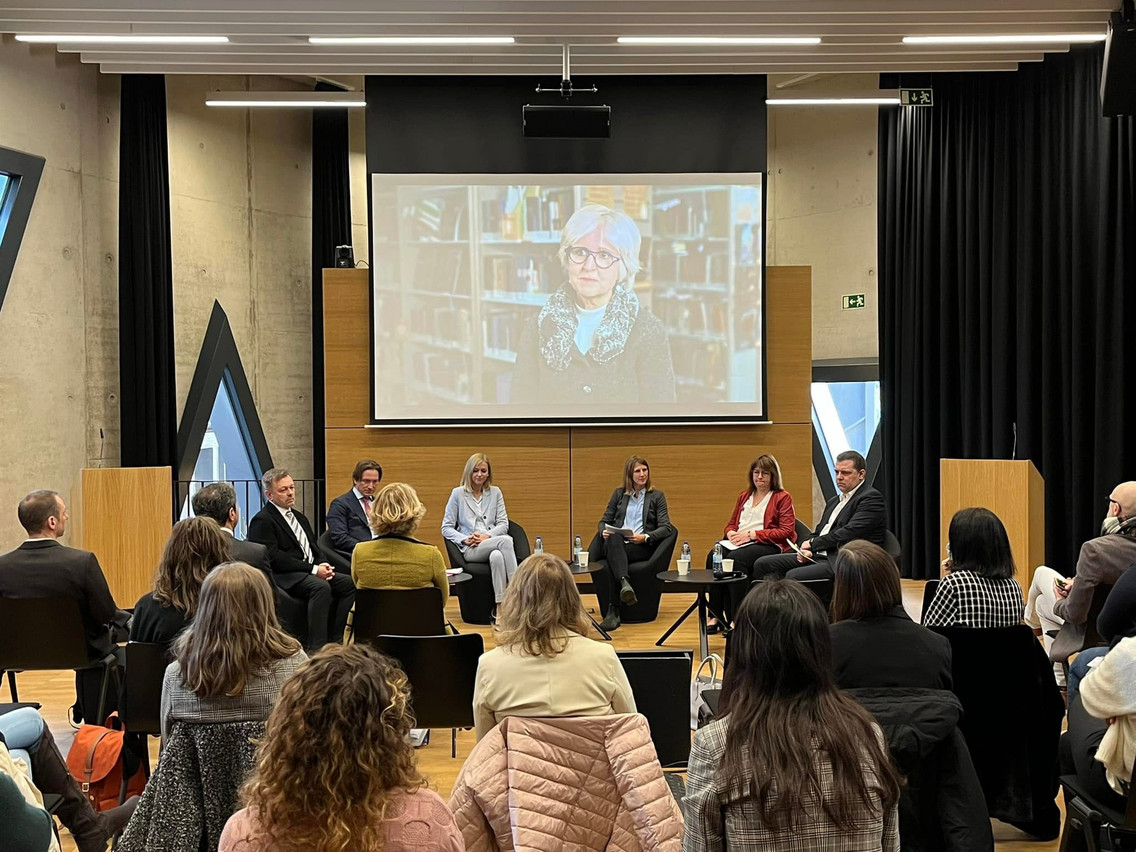While the pandemic took a greater toll on women's employment and their care burden, men had a higher hospitalisation and mortality rate.
The research work, which included contributions from Statec, was commissioned by the equality ministry. The results of the study were made public on 7 March at the Luxembourg Learning Centre in the presence of equality minister Taina Bofferding (LSAP).
The findings uncovered the consequences of the pandemic and covid measures from a gender lens on three main levels such as health, employment and behavioural or social factors.
“The pandemic is not gender neutral. It has different effects on the gender,” explained Bofferding, who described the study as an indispensable first step and underscored its importance in developing more gender-focused policies for a more resilient society.
Aline Muller, the director general of Liser, pointed out that women worked in sectors with a higher social contribution and in fields with a higher risk of contracting the virus, for example, nurses and elderly home workers. The study also demonstrates that the pandemic risks undoing gains in gender equality.
Health impacts
In the area of health, the infection rate for men and women were almost identical for all the different age groups analysed except for women between the ages of 18 to 44, who had a slightly higher infection rate compared to men. However, older males above 80 years old were more susceptible to the virus. The study also shows more mothers were infected than fathers, a finding that is likely liked to household roles.
More men--especially those over 45 years old--experienced severe symptoms requiring hospitalisation and intensive care. Consequently, the study revealed that there were also more male deaths resulting from covid. A discrepancy that is quite pronounced in Luxembourg, although this has been noticed in other parts of the world. The reason for the higher hospitalisation rate for men remains uncertain.
It is important to note that more women seemed to comply with the health safety measures put in place by the government based on the respondents of an online survey carried out in March last year. However, the results proved that even though women showed a similar understanding on the need for vaccination, they were more hesitant due to possible secondary complications. As a result, the study also recommended a gender aligned communication strategy to help change attitudes.
Employment
The study also underlined several shifts in the labour market with the most significant being that more women had to leave their jobs, especially between the period of February to June 2020. Women did even more unpaid work as the care burden fell mostly on them. There was no significant change in the number of unemployed men in the same period.
Likewise, women also benefitted more from government measures such as family leave and part-time work, even though this could set women back in their long-term career goals.
Social impact
The study notes a general reduction in social activities for both men and women alike in 2020. Although men and women spent almost the same additional time doing domestic chores, women devoted 30 minutes extra taking care of children each day. The difference in the time spent on child care both sexes reduced in 2021.
“Our results suggest that men missed their chance to increase their contribution to unpaid work in a way that could have narrowed the gender gap in household chores and childcare," said Dr. Giorgia Menta.
Speakers at the conference also took part in the roundtable sessions that unravelled more inequalities resulting from the pandemic and explored possible solutions to bridge the gap.
